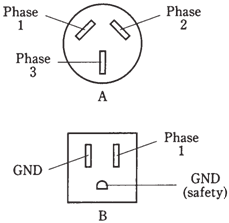Along the line:
The extreme voltage is good for high-tension power transmission, but it is certainly of no use to the average consumer. The wiring in the high tension system should be done by using precautions to prevent arcing and short circuits. Personnel should be kept at least several feet away, or even tens of feet, away from wires. Can we imagine trying to use the appliance, such as home computer, by plugging it into the 500-kV electrical outlet? The bolt of artificial lightning would dispatch before you got near receptacle.
Medium voltage power lines branch out from major lines and step down transformers can be used at branch points. These lines fan out to lower-voltage lines, and step down transformers are used at these points, too. Each transformer should have windings heavy enough to withstand product P = EI, the amount of power delivered to all the subscribers which are served by that transformer, at the time of peak demand.
At times, such as during a heat wave, the demand for electricity increases above the normal peak level. This loads down circuit to the point that the voltage drops several percent. This is termed as a brownout. If the consumption rises further still, a dangerous current load can be placed on one or more intermediate power transformers. Circuit breakers in transformers protect them from destruction of them by opening circuit. Then there is a temporary blackout.
Ultimately, at the individual homes and buildings, transformers step voltage down to either 234V or 117V. Normally, 234-V electricity is in 3 phases, each can be separated by 120 °, and each appearing at one of the 3 prongs in outlet shown in the figure A given below. This voltage is commonly used with heavy appliances, such as the kitchen oven (if they are electric), heating (if it is electric), and laundry washer and dryer. A 117-V outlet supplies only one phase, appearing between 2 of the 3 prongs in outlet. The 3rd prong is for ground as shown in the figure B given below.

Figure:-- At point A, three-phase, 234-Vac outlet. At point B, single-phase, 117-Vac outlet.